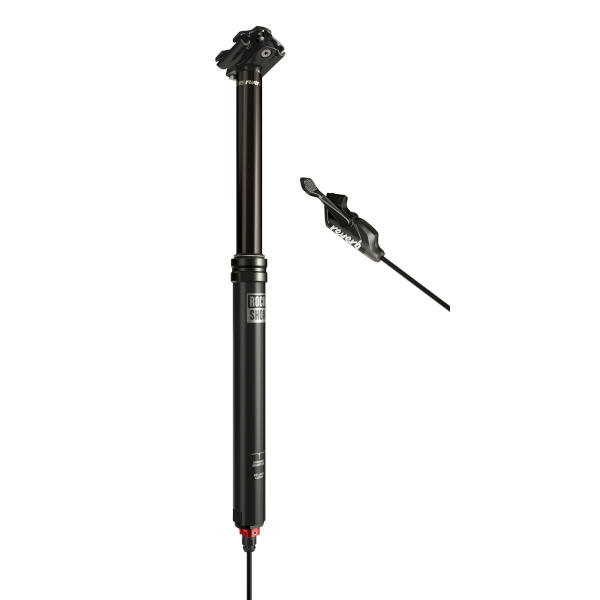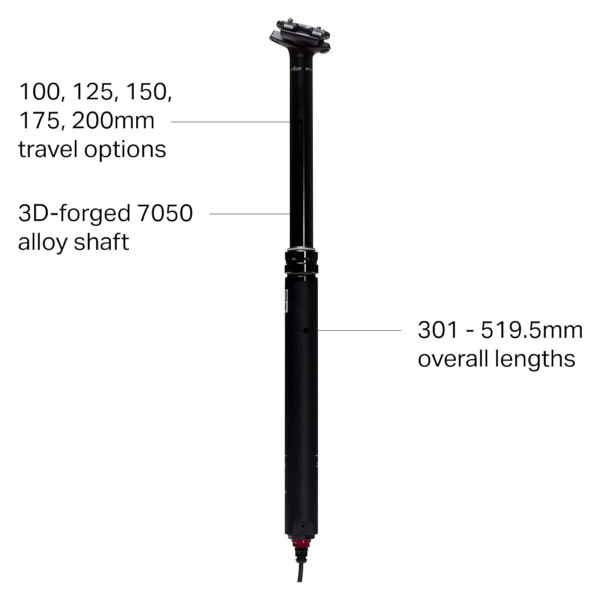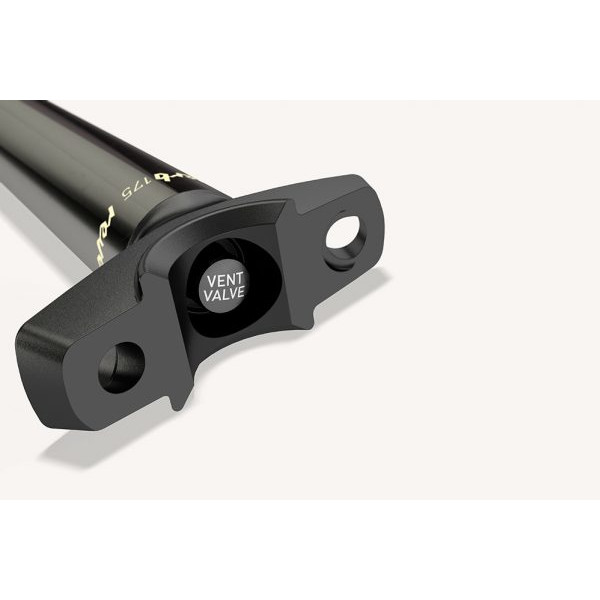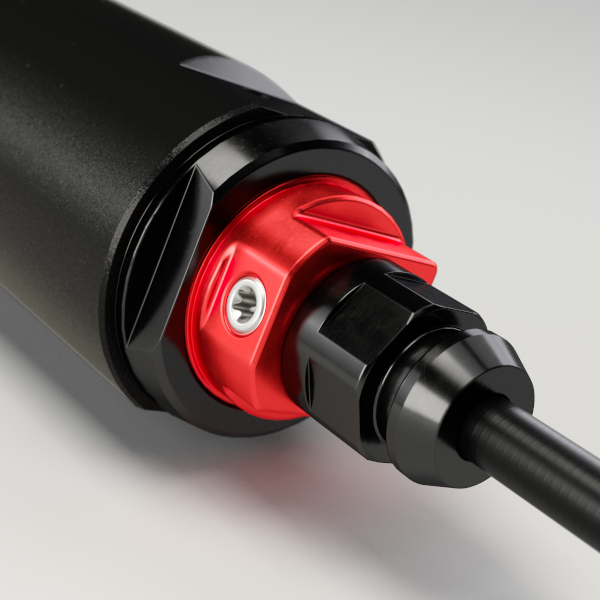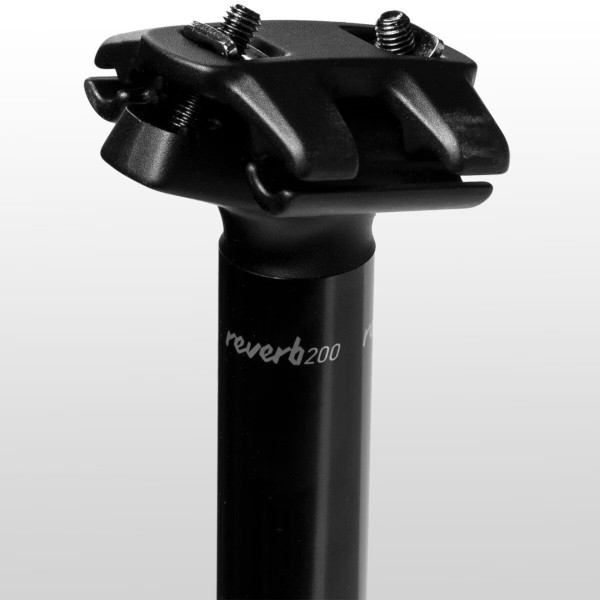Introduction
The RockShox Reverb Stealth C1 Dropper Post stands as a benchmark in mountain biking, offering a seamless blend of performance, reliability, and integration. As a hydraulic dropper post, it's a long-time favorite among trail and enduro enthusiasts, prized for its buttery-smooth operation and stealth cable routing. Priced between $400 and $550, depending on travel length and specifications, it competes with premium options like the Fox Transfer Factory, OneUp V2, and Crank Brothers Highline 3. This review dissects every aspect of the Reverb Stealth C1, from its robust construction to its trail performance, while addressing its quirks and value in a crowded market.
Design and Build Quality
- Sleek, Stealthy Integration: The Reverb Stealth C1 lives up to its name with a design optimized for internal cable routing. The hydraulic hose exits the post’s base cleanly, minimizing clutter and snag risks. Furthermore, the post’s matte-black finish and minimalist branding align with modern bike aesthetics, making it a favorite for riders prioritizing a “clean” cockpit.
- Durable Construction: Constructed from 6061-T6 aluminum, the Reverb Stealth C1 balances weight (520–600g, depending on travel) with durability. Additionally, the bushing-guided design ensures consistent performance, while the dual-seal head reduces contamination from dirt and moisture. However, the hydraulic system’s complexity adds weight compared to cable-driven rivals like the OneUp V2 (450g).
- Refined Lever Ergonomics: The updated C1 remote lever features a textured, tool-free adjustable paddle that pairs well with SRAM’s MatchMaker clamp system. While ergonomic, some riders may find the lever’s throw slightly longer than competitors like the Wolf Tooth LightAction Remote.
Performance
- Smooth, Consistent Actuation: The Reverb Stealth C1’s hydraulic system delivers industry-leading smoothness. Even under load, the post ascends and descends without hesitation, thanks to its pressurized oil mechanism. Consequently, riders transitioning from mechanical posts will notice the absence of cable drag, particularly on longer travel models (150–170mm).
- Reliability in Harsh Conditions: RockShox’s updated sealing system tackles the Reverb’s historical weakness: sensitivity to contamination. In muddy Pacific Northwest trails, the C1 resisted grit ingress better than earlier models, though periodic maintenance remains critical. After six months of abuse, the post showed minimal bushing play—a testament to its robust internals.
- Temperature Sensitivity: However, hydraulic systems can falter in extreme cold, and the Reverb is no exception. At sub-30°F (-1°C), the oil thickens slightly, causing a 10–15% slowdown in return speed. This is less noticeable in cable-actuated competitors like the Fox Transfer.
Installation and Compatibility
- Frame Compatibility Challenges: The Reverb Stealth C1 requires precise hose length measurement and routing, which can be daunting for DIY installers. Frames with tight internal channels (e.g., some carbon models) may necessitate professional assistance. The post is available in 30.9mm, 31.6mm, and 34.9mm diameters, covering most modern trail bikes.
- Travel Adjustment: The C1 offers tool-free travel adjustment via a collar lock—a welcome upgrade over previous generations. Riders can fine-tune drop length in 5mm increments, though reducing travel leaves an unused post section exposed, which may collect grime.
- Hose Management: The hydraulic hose’s proprietary fittings require careful handling during installation. Furthermore, unlike the Fox Transfer’s universal cable, the Reverb’s system demands SRAM-specific bleed kits (~$50) for maintenance, adding to long-term costs.
Features and Customization
- Adjustable Return Speed: A unique feature, the Reverb’s return speed can be tuned via a dial at the post base. Slower speeds benefit technical climbers, while faster returns appeal to enduro racers. This level of customization outshines simpler posts like the Brand-X Ascend.
- Maintenance Demands: As a result of its hydraulic system, the Reverb requires more upkeep than cable-driven rivals. Annual bleeds are recommended to maintain performance—a process that, while straightforward with SRAM’s kit, may intimidate casual riders. Bushings and seals are user-replaceable, extending the post’s lifespan.
- Lever Customization: The C1’s lever supports multiple mounting positions and paddle angles. However, riders with smaller hands may find the stock paddle less intuitive than Wolf Tooth’s low-profile options.
Comparison with Competitors
- vs. Fox Transfer Factory: Fox’s flagship post uses a mechanical cable, reducing weight (450g) and maintenance. However, the Transfer lacks the Reverb’s silky-smooth action and adjustable return speed. Fox’s Kashima coating adds bling but little functional advantage.
- vs. OneUp V2 Dropper: OneUp’s post shines in affordability and weight (450g), with tool-free travel adjustment and easy servicing. However, its cable-actuated design can’t match the Reverb’s hydraulic refinement, particularly under heavy saddle pressure.
- vs. Crank Brothers Highline 3: The Highline 3 rivals the Reverb with tool-less installation and a competitive price. Its cable system is more beginner-friendly but feels less precise on rapid descents.
Pros and Cons
Pros
- Unmatched smoothness and consistent performance
- Tool-free travel adjustment and return speed tuning
- Durable construction with improved sealing
- Sleek, stealth-compatible design
- Wide diameter and travel options
Cons
- Heavier than cable-actuated competitors
- Complex maintenance requiring proprietary tools
- Cold-weather performance dips
- Higher upfront and long-term costs
Conclusion
The RockShox Reverb Stealth C1 Dropper Post remains a top-tier choice for riders prioritizing performance over convenience. Its hydraulic system delivers a peerless user experience, albeit with a steeper learning curve for installation and upkeep. While casual riders might prefer the simplicity of cable-driven posts, the Reverb C1 justifies its premium price for serious trail and enduro athletes who demand reliability mid-descent.
Final Verdict
Rating: 8.5/10
Best For: Enthusiasts seeking buttery-smooth dropper performance, riders with internally routed frames, and those willing to invest in long-term maintenance.
